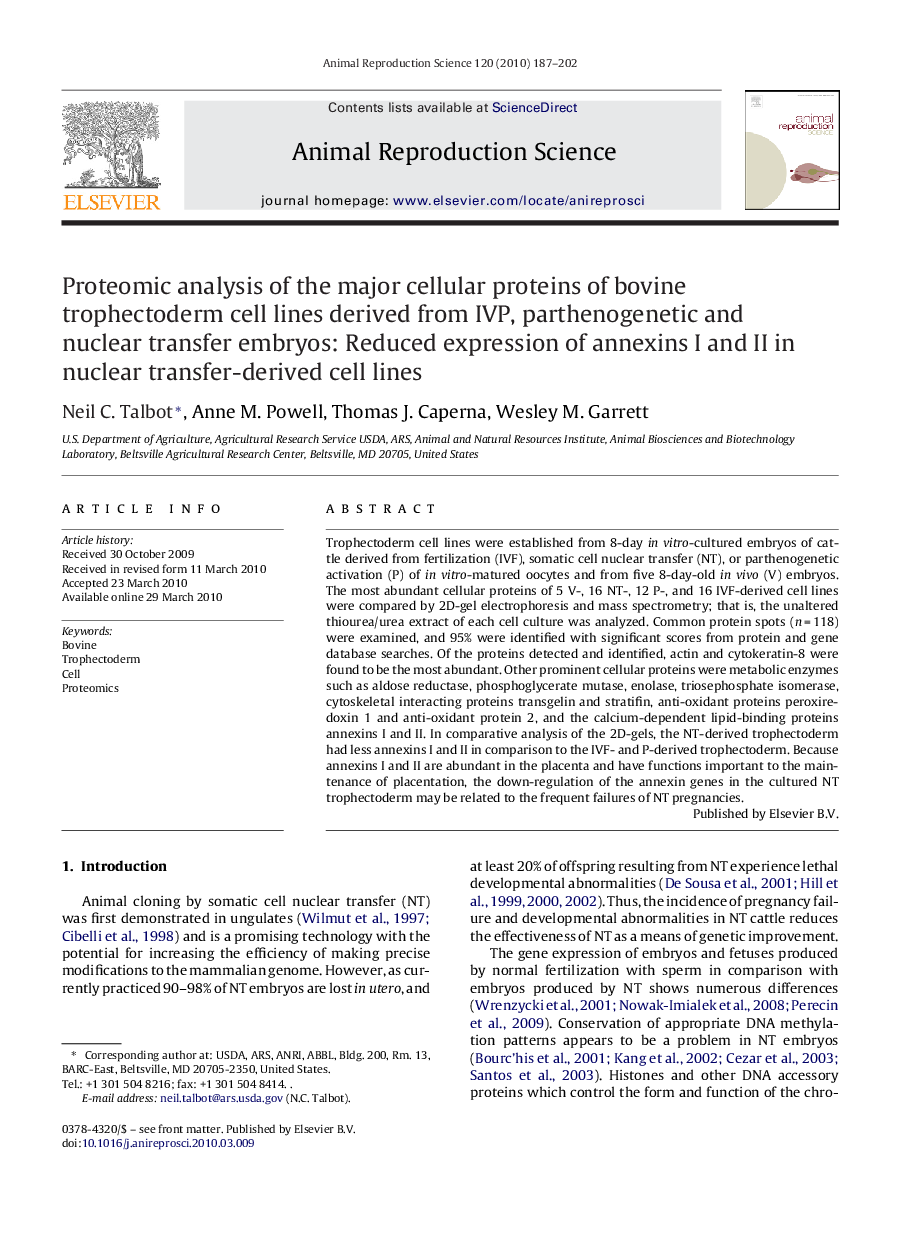| Article ID | Journal | Published Year | Pages | File Type |
|---|---|---|---|---|
| 2073546 | Animal Reproduction Science | 2010 | 16 Pages |
Trophectoderm cell lines were established from 8-day in vitro-cultured embryos of cattle derived from fertilization (IVF), somatic cell nuclear transfer (NT), or parthenogenetic activation (P) of in vitro-matured oocytes and from five 8-day-old in vivo (V) embryos. The most abundant cellular proteins of 5 V-, 16 NT-, 12 P-, and 16 IVF-derived cell lines were compared by 2D-gel electrophoresis and mass spectrometry; that is, the unaltered thiourea/urea extract of each cell culture was analyzed. Common protein spots (n = 118) were examined, and 95% were identified with significant scores from protein and gene database searches. Of the proteins detected and identified, actin and cytokeratin-8 were found to be the most abundant. Other prominent cellular proteins were metabolic enzymes such as aldose reductase, phosphoglycerate mutase, enolase, triosephosphate isomerase, cytoskeletal interacting proteins transgelin and stratifin, anti-oxidant proteins peroxiredoxin 1 and anti-oxidant protein 2, and the calcium-dependent lipid-binding proteins annexins I and II. In comparative analysis of the 2D-gels, the NT-derived trophectoderm had less annexins I and II in comparison to the IVF- and P-derived trophectoderm. Because annexins I and II are abundant in the placenta and have functions important to the maintenance of placentation, the down-regulation of the annexin genes in the cultured NT trophectoderm may be related to the frequent failures of NT pregnancies.
